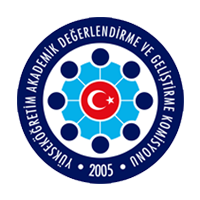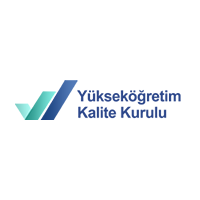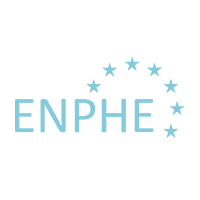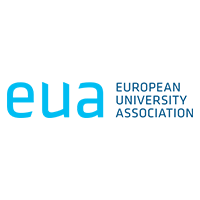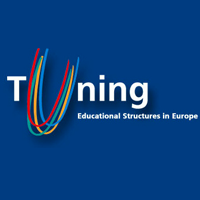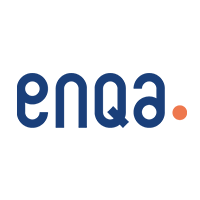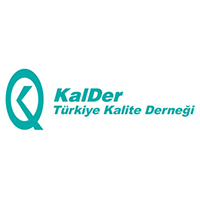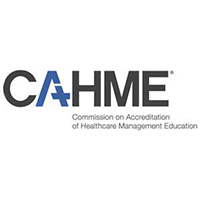The Association for Evaluation and Accreditation of Health Sciences Education Programs was registered by the Higher Education Quality Board in January 2018. As of this date, the announcement has been made through the Council of Deans and the website and accreditation applications have started to be received. Necessary initiatives have been taken to ensure that accreditation processes are maintained on time and in accordance with the standards. Announcement was made to form evaluation teams, candidate identification surveys were created, and training programs were planned. Evaluator trainings were organized for eligible candidates, and reinforcement trainings were organized as the process progressed. Candidates who attended both training sessions took part in the evaluator teams. At the same time, training was organized for students to raise awareness and the training was completed with approximately 30 students from each discipline.
As an association, we participated and shared opinions in congresses, symposiums and events organized by different disciplines in the field of health. Participation in meetings where educational standards in the field of health were discussed, knowledge and experience were gained. For the first time, the International Health Sciences Education Programs Accreditation Congress has been planned and held in Ankara on 18-19 October 2019
Accreditation of programs operating in the field of health sciences started in 2018 by the Association for Evaluation and Accreditation of Health Sciences Education Programs and was completed in 2019. In 2018, applications were received for 17 programs from 9 universities. One of the applicant universities applied with 6 programs. However, as it was determined that there were still no graduates from 5 programs, the other program was not included in the evaluation process and their applications were rejected as the discipline-specific criteria were still not accepted. One university also withdrew its application because it could not complete the self-evaluation report writing process. The applications of 9 programs from a total of 6 universities were accepted and included in the accreditation evaluation process, one program could not be accredited, and the remaining eight programs were accredited with different validity periods such as 5 years or 2 years. 5-year accreditation was given to four different types of programs among the applicant programs.
The accreditation application, during the examination and evaluation of the program; Strengths and improvements in the programs and improvement suggestions regarding problematic areas are discussed in this report as a situation assessment.
STRENGTHS OF PROGRAMS:
1. It has been determined that the outputs of the programs include the outputs of SABAK and support the program educational objectives.
2. It has been determined that defined education methods that guarantee the acquisition of knowledge, skills and behaviors to students are applied in the programs. In university hospitals, private institutions and organizations, sufficient variety of skills and behaviors are gained. It has been determined that the internships and professional practices in the curriculum can be carried out in hospitals and health institutions generally affiliated with the university, and there is a variety in this regard. The main application experience is sufficient, the ability to use the knowledge and skills acquired in previous courses, the ownership of the training curriculum that includes standards and realistic constraints related to the field of health, and that can guarantee clinical decision-making experience are considered as strengths.
3. Within the scope of the training program, it has been determined that basic science courses are given by relevant field experts and that there are general trainings consistent with the institution and program objectives, complementing the professional training and technical content, and providing familiarity with the project management. It has been determined that different teaching methods is being used in educational programs.
4. It has been determined that the programs develop and implement consultancy and monitoring methods. The existence of a regular and strong consultancy system and strong communication between the head of the department and the lecturers were also confirmed by the students. The strengths of the programs are the establishment of a qualified student-teaching staff relationship and the willingness of lecturers to help and support students.
5. In the accredited programs, there are qualified and sufficient number of teaching staff in their field and importance is given to train faculty members in these programs. In addition, it has been determined that career plans are made for academic staff in the programs and there is a systematic appointment and promotion system. It has been determined that the devotion and institutional commitment of the academic staff working in the programs are high.
6. The fact that the library facilities are rich enough to contribute to the education and training processes is considered among the factors that strengthen the programs. It has been observed that physical environments are suitable for disabled access.
7. In all processes of accreditation, the support, encouragement and motivation of the senior management for program accreditation is quite strong, and the awareness of the program owners is high. Programs have fast and easy communication opportunities with managers.
8. It is seen that Erasmus, double major and minor opportunities are found and used in education programs.
9. It has been determined that scientific research and social responsibility projects are integrated and implemented into the education programs.
ASPECTS OF PROGRAMS OPEN TO DEVELOPMENT:
1. Although it was determined that stakeholder opinions were received through meetings and surveys in order to determine the stakeholder needs in the programs, the situation of being that the systematic processes regarding the issue have not yet been fully defined is seen as open for development. There is a requirement to identify stakeholder requirements and document the analysis results, and to reflect and update them in training programs. It has been determined that systematic processes that show how the results of satisfaction surveys of internal and external stakeholders are used and monitored in improving quality are based on concrete evidence and there are aspects open to improvement in terms of reflecting the results obtained to the training program. It has been determined that there are aspects open to improvement in defining systematic processes in order to meet the needs of internal and external stakeholders especially in the processes of updating training programs.
2. Although different teaching methods were used in the programs, it was observed that these methods were not included in the course information packages. Updating of course information packages in programs, intermittent and limited communication between the programs and the university information system regarding these updates are considered open to im
3. Especially developing and managing systematic methods for monitoring program outputs is an open side for improvement. When the measurement and evaluation process used to determine and document the achievement of each of the program outputs was examined, it was determined that the Planning and Implementation stages were used in the PUKÖ cycle, and there was weakness in the use of Check and Take Action stages.
4. Within the scope of continuous improvement of education plans, although changes were made in the education plan in line with the opinions of current students and department lecturers, but systematic evaluation and monitoring of the improvements were considered as aspects open to improvement. In all processes such as education program, program outputs, development of student and teaching staff qualifications, financial resources and management structure, although the results obtained from an established assessment and evaluation system are realized in the planning and implementation phase, there are weaknesses in the realization of control and precautionary stages. The use of Check and Take Action stages for continuous improvement of programs is determined as an open side for improvement.
5. Although there is awareness of the systematic processes that show that the educational objectives are achieved in the programs, there are deficiencies in the process of defining and documenting them.
6. In the current internship guidelines; in some aspects such as evaluation of success, making the job descriptions of the institution's internship manager, etc. It has been determined that there are aspects open to improvement in terms of updating and reviewing the consistency of implementation with the directive.
7. As stakeholders, students should be represented more widely in their education and training processes.
8. Although there are teaching environments such as classrooms and laboratories, it has been determined that improvements should be made towards information technologies.
9. It has been determined that there are weaknesses in regularly monitoring the graduates in the programs and updating the programs according to these monitoring results with a systematic method and documenting the process in which these studies are carried out.
10. It has been determined that there are weaknesses in terms of reviewing status in some aspects such as course information packages of the programs, AKTS workload calculations, teaching and achievement evaluation methods and course contents, etc.
11. It has been observed that there is an awareness of systematic processes that show that the educational objectives have been achieved in the programs. However, deficiencies were observed in the process of defining and documenting the achievement of the goals.
IMPROVEMENT RECOMMENDATIONS FOR PROBLEM AREAS IN PROGRAMS:
1. Since it is seen that the necessity of ensuring the horizontal and vertical integration of the education program in the programs is not fully understood, it was seen as a necessity to explain this issue to the programs more clearly.
2. It is considered to be appropriate to define a process for ensuring the integration of National Core Education Programs in the fields of the programs into the programs by using a certain method and monitoring the integration
3. In the process of updating the programs, it has been observed that decisions have been taken to define systematic processes in order to analyze internal and external stakeholder requirements. However, it is thought that maintaining and monitoring these decisions especially with the PUKÖ cycle will make the program structures stronger.
4. In the programs, it is recommended to monitor the course information packages in terms of ECTS workload calculations, teaching and achievement evaluation methods and course contents, reflecting the results on student knowledge, skills and behaviors, and ensuring the acquisition of graduate qualifications.
5. It is thought that getting support from education faculties for the development and management of systematic methods for monitoring program outcomes will contribute to the process.
6. It is recommended that the internship directives of the programs be constantly updated in terms of evaluating the success of the internship directives, updating the job descriptions of the institution and unit internship leaders etc, and constantly reviewing the consistency of implementation with the internship guidelines.
7. It is considered that making decisions to ensure the representation of students in education processes as stakeholders can ensure that the educational objectives and program outcomes are achieved.
8. It is thought that it would be appropriate to focus more on the requirement that the results obtained from the measurement and evaluation system be systematically based on concrete data in order to ensure continuous improvements in programs.
9. It is recommended to define the processes that show how the results of the satisfaction surveys of external stakeholders are used and monitored in the improvement of quality in the programs.
10. In the process of achieving the educational objectives of the program, it is recommended to follow the graduate monitoring system with more systematic measurable methods and to reflect the results to the program.
11. Support from top management is needed in terms of financial contribution to programs for accreditation. Making necessary adjustments on the budget will support the process.
Prof. Dr. Afsun Ezel Esatoğlu
SABAK President

